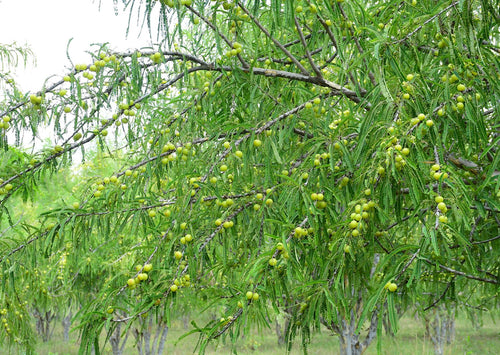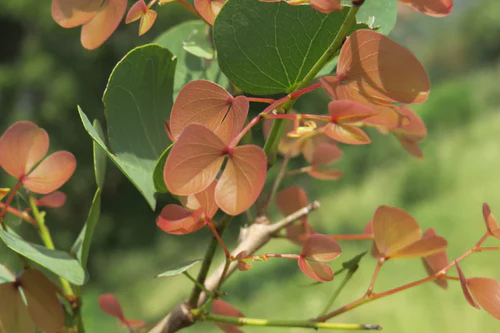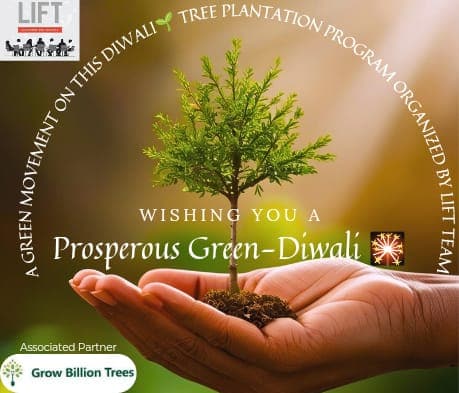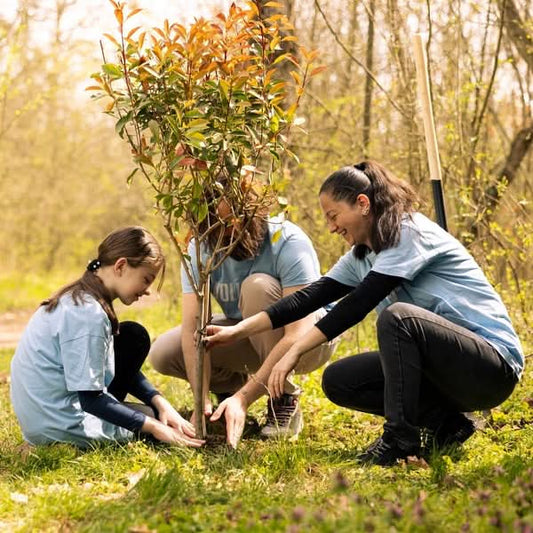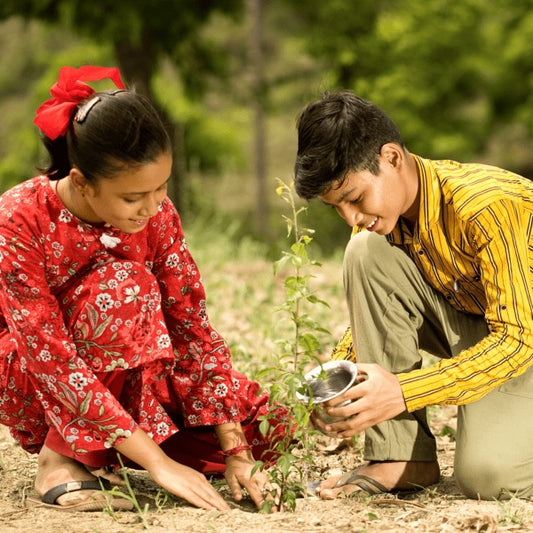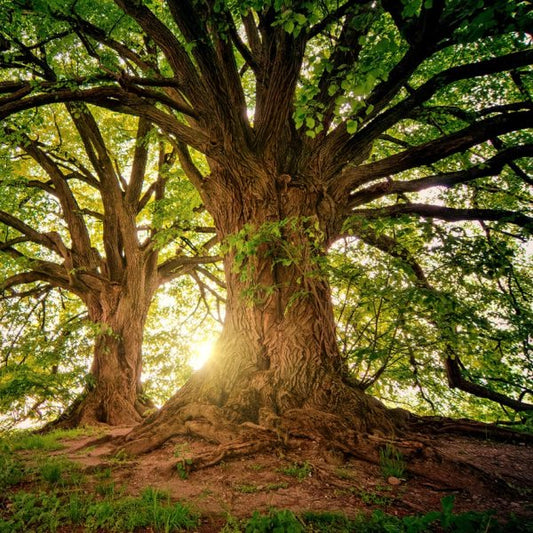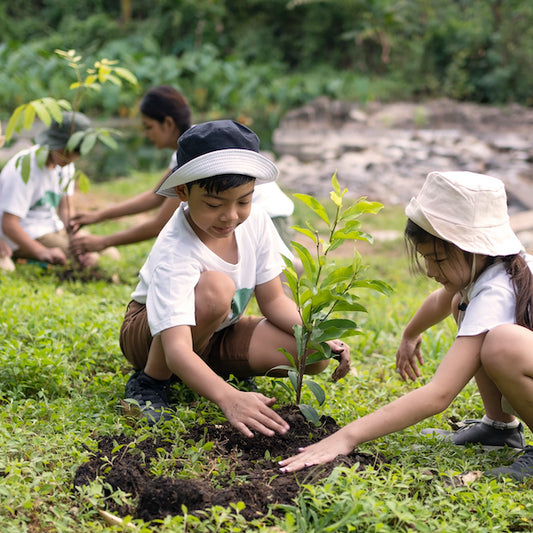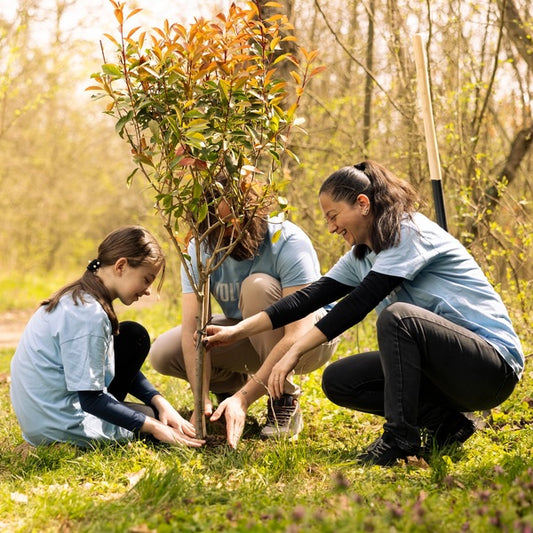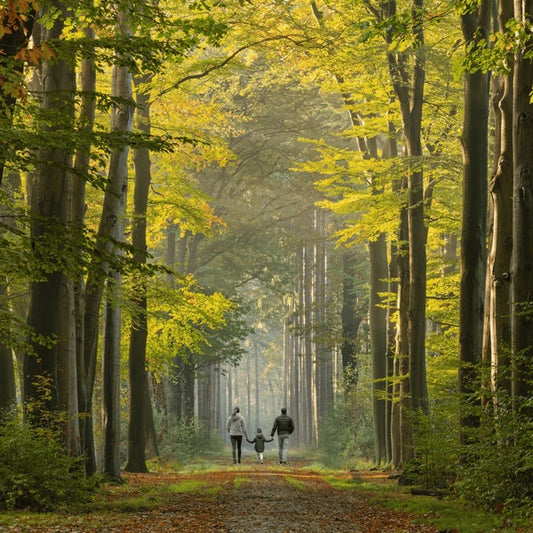Alivus Life Sciences Green Footprint: A Step Towards a Healthier Plane
Alivus Life Sciences, a leading developer and manufacturer of high-value Active Pharmaceutical Ingredients (APIs), is committed to fostering environme Read more
Plantation Site Gallery
Project Update 3
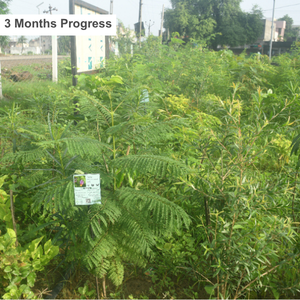
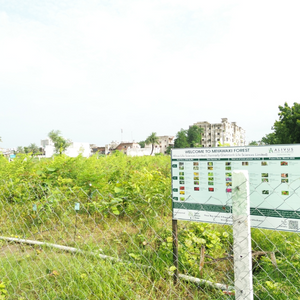

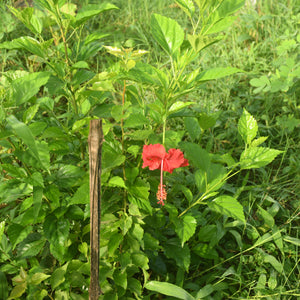
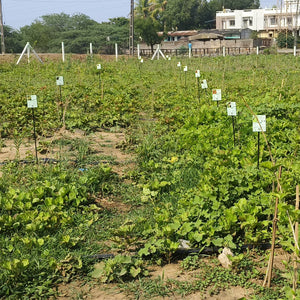
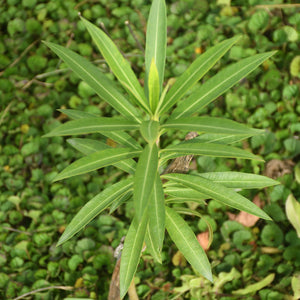
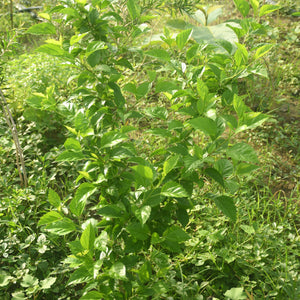
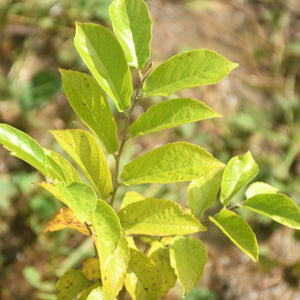
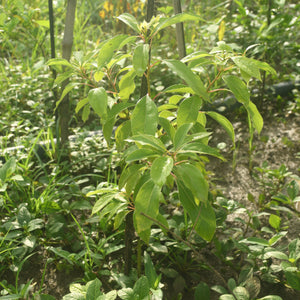

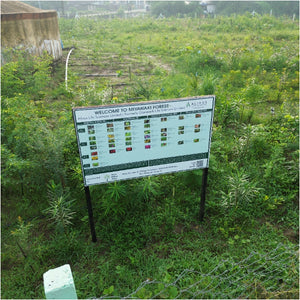
Project Update 2
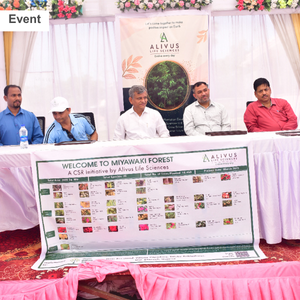

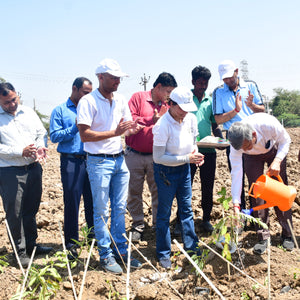
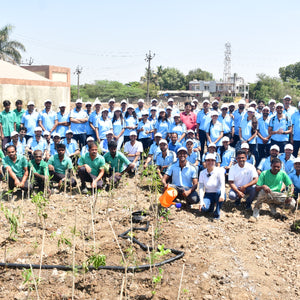
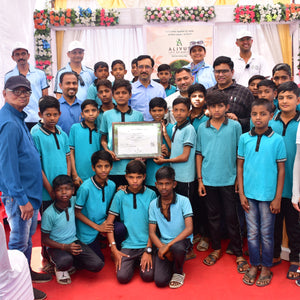
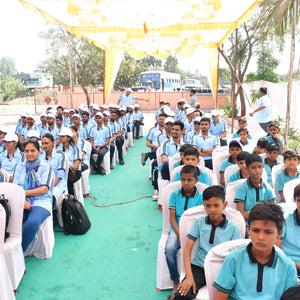
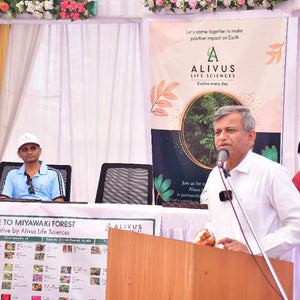
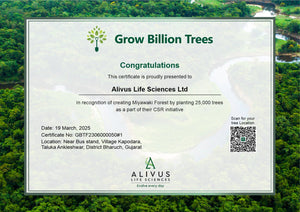
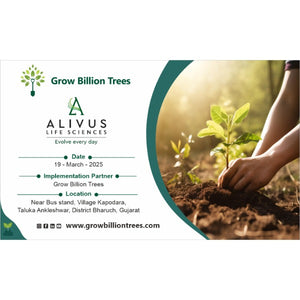
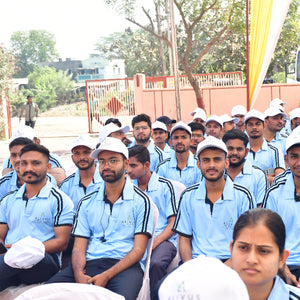
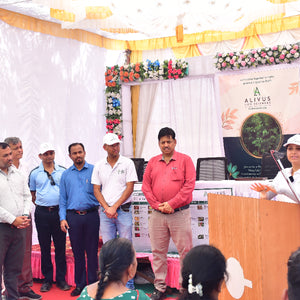
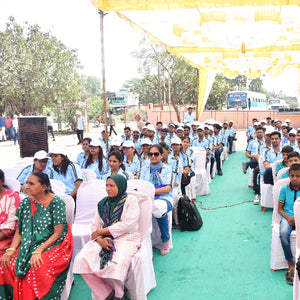
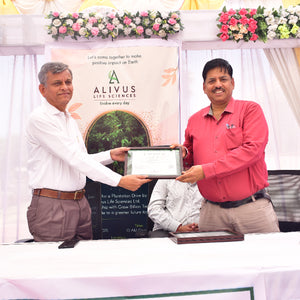
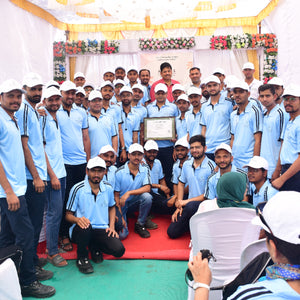
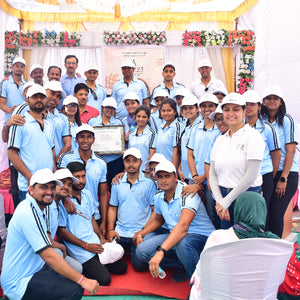
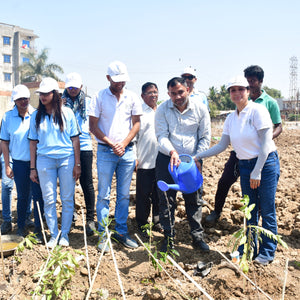
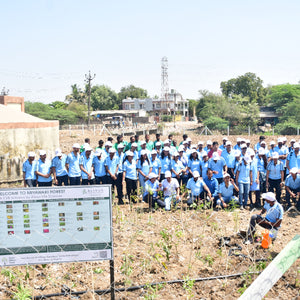

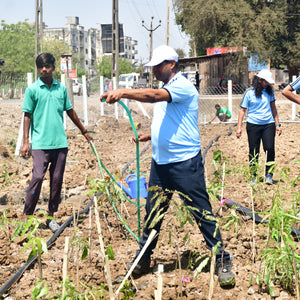
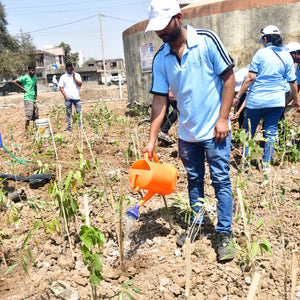
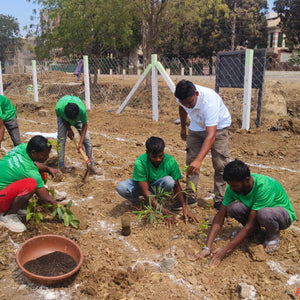
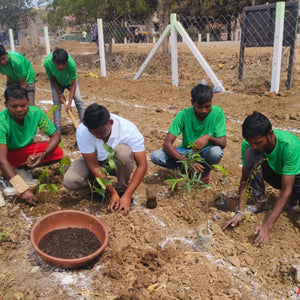
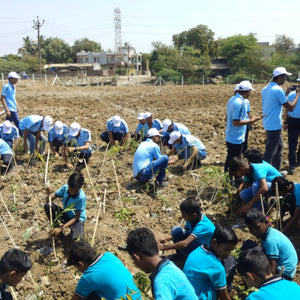
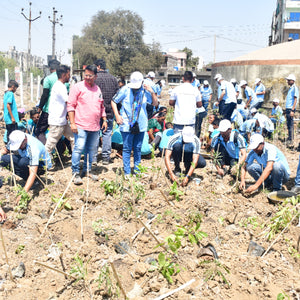
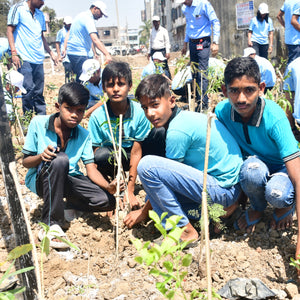
Project Update 1
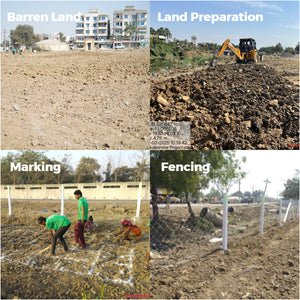
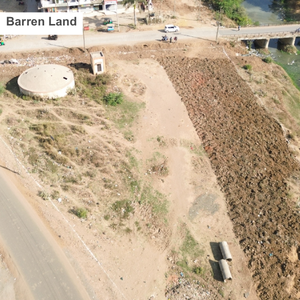
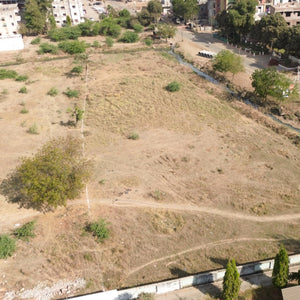
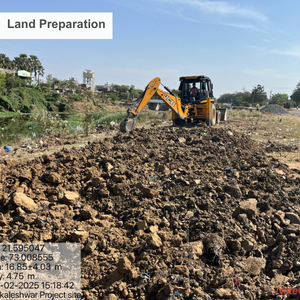
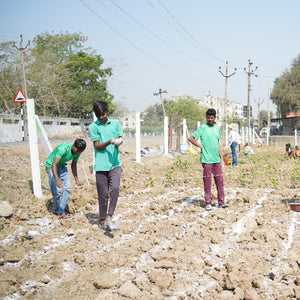
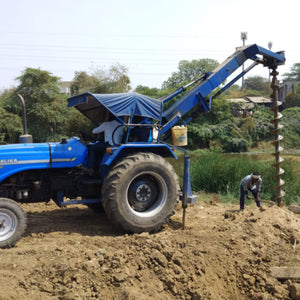
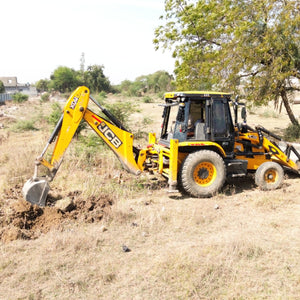
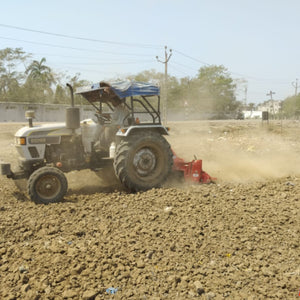


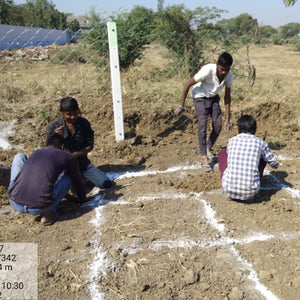

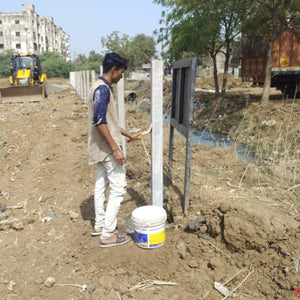
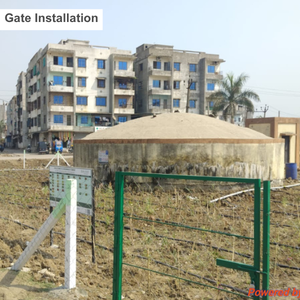
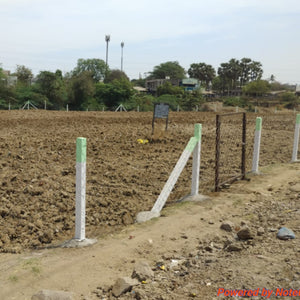
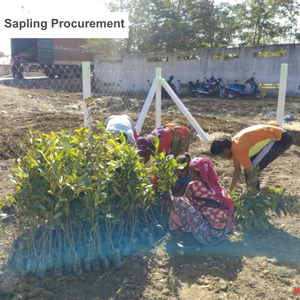
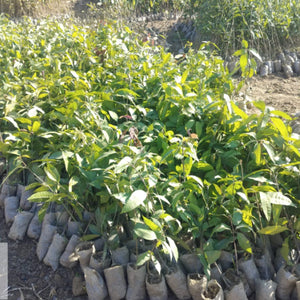
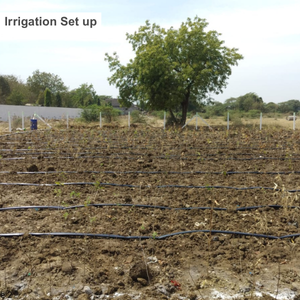
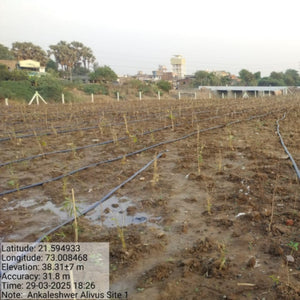
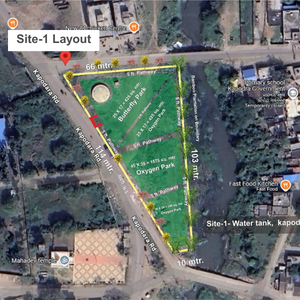

Digital Forest
Forest with 25,000 Trees planned
Want to plant your tree now?
Plant a Tree @ 299Alivus Life Sciences Green Footprint: A Step Towards a Healthier Planet
Alivus Life Sciences, a leading developer and manufacturer of high-value Active Pharmaceutical Ingredients (APIs), is committed to fostering environmental sustainability through its miyawaki forest initiative. As part of its Corporate Social Responsibility (CSR) strategy, the company is actively engaged in tree plantation efforts designed to decarbonize operations, create carbon sinks, and enhance resilience to climate change.
Through the Miyawaki plantation method, Alivus Life Sciences is working to restore green spaces by planting native tree species that contribute to biodiversity, improve air quality, and create a healthier environment for current and future generations. This initiative aligns with the company’s commitment to reducing its carbon footprint and promoting sustainability in the communities where it operates.
By transforming landscapes into thriving green ecosystems, Alivus Life Sciences is not only mitigating the effects of climate change but also reinforcing its dedication to a greener, more sustainable planet.
Project Planning & Execution
No of Trees: 25,000
Plantation Location: Village Kapodara, Taluka Ankleshwar, District Bharuch, Gujarat - 393001
Plantation Duration: 26th February 2025 to 27th March 2025
Names of Species: Arjun, Tamarind, Jackfruit, Jamun, Mahogany, Mango, Palash, Peepal, Saptaparni, Shisham, Teak, Amla, Amaltas, Ashoka, Bael, Earleaf Acacia, Camphor, Chirol, Custard Apple, Drumstick, Guava, Kachnar, Karanj, Jangal Jalebi, Lemon, Safed Kher, Shami, She Oak, Yellow Flame, Bottle Brush, Bougainvillea, Gudhal, Kaner Red, Karonda, Madhu Kamini, Pomegranate, Tecoma, Bamboo, Lemon Grass
Species Selection & Its Benefits:
The Alivus Life Sciences Miyawaki Forest Plantation Project consists of 3 distinct sections: Oxygen Park, Butterfly Park, and Arogya Van, each designed to serve a unique ecological purpose while enhancing biodiversity and sustainability.
The Oxygen Park focuses on high oxygen-producing and carbon-sequestering species to improve air quality and combat pollution. Trees like Pipal (Ficus religiosa), Banyan (Ficus benghalensis), Teak (Tectona grandis), Sheesham (Dalbergia sissoo), and Mahogany (Swietenia mahagoni) are included for their ability to release oxygen, absorb carbon dioxide, and create a cooling effect in environments.
Butterfly Park is designed to attract butterflies, bees, and birds, this section includes flowering and fruit-bearing species that provide nectar and shelter. Hibiscus (Gudhal), Tecoma (Tecoma stans), Bougainvillea (Bougainvillea glabra), and Amaltas (Cassia fistula) serve as vibrant nectar sources, while Guava (Psidium guajava), Jackfruit (Artocarpus heterophyllus), and Pomegranate (Punica granatum) help sustain pollinator populations.
The Arogya Van is a section dedicated to medicinal plants and trees with therapeutic properties. Amla (Phyllanthus emblica), Bael (Aegle marmelos), Karanj (Pongamia pinnata), Arjun (Terminalia arjuna), and Lemon Grass (Cymbopogon citratus) are selected for their contributions to traditional medicine, immune-boosting properties, and environmental resilience.
By strategically selecting species for each section, the project not only enhances air quality, biodiversity, and community well-being but also creates a self-sustaining green space that supports sustainability and climate resilience.
Beneficiaries Details
-
Target Population: Employees, stakeholders, local community members, and volunteers involved in the project.
-
Age Group: All age groups focus on adults to seniors.
-
Gender: Inclusive of all genders
- Social & Economic Status: Open to all social and economic backgrounds, with a focus on community participation.
Planting Methodology and Its Advantages
Miyawaki Forest: In the Alivus Life Sciences Miyawaki Plantation Project, the Miyawaki method is employed to create a dense, multi-layered forest that mimics natural ecosystems. The method focuses on planting a variety of native species in close proximity, resulting in a fast-growing and self-sustaining forest. The main features of this method are:
-
High-Density Planting: Trees and plants are planted densely in a small area to maximize the growth of a robust ecosystem.
-
Layered Approach: The forest is designed with different plant layers, including canopy, trees, shrubs, and grass (ground layer), to replicate the structure of a natural forest.
-
Native Species: Only native species are used, ensuring they are well-suited to the local climate and soil conditions, promoting faster growth and higher resilience.
-
Faster Growth: The Miyawaki method accelerates forest development, resulting in a dense, thriving forest in a short time, typically 2-3 years.
Preparation and Analysis
-
Site Analysis: Factors like soil type, water availability, and sunlight exposure were carefully evaluated for suitability.
-
Site Preparation: The site was cleared using a JCB to remove debris followed by spreading manure on the land. After that a cultivator was used for mixing the soil. During this process, small and large stones get mixed in, and then the larger stones are removed.The soil was loosened, and organic compost was mixed in to improve fertility and moisture retention.
To enhance soil fertility and promote healthy plant growth, the following organic amendments were mixed into the soil:
-
Jivamrit: Enriches soil nutrients, boosts microbial activity, enhances nitrogen fixation, and accelerates plant growth.
-
Vermicompost: Loosens soil, improves sapling growth, and retains water for the long term.
Plant Selection and Planting
-
Plant Selection: Native species were selected for drought resistance and adaptability to the local environment.
-
Planting Technique: High-density planting, with 3 to 5 saplings per square meter, was used, with pits dug for strong root establishment.
Care and Maintenance
-
Watering: The project utilizes rain pipes to efficiently distribute water to the trees, ensuring proper hydration while minimizing water wastage. The rain pipes help in maintaining uniform water flow to all plants, especially in densely planted areas, supporting their growth.
-
Regular Maintenance: Weeding, pruning, and pest control were conducted in the early years.
Monitoring and Growth
-
Monitoring: The plantation’s health and growth were regularly tracked, with proactive measures taken for pest control and disease management.
Here are the four layers typically found in a Miyawaki forest:
-
Canopy Layer: This topmost layer consists of tall trees that provide the canopy. These trees are usually fast-growing species that can reach heights of 15 to 30 meters or more. They offer shade and protection to the layers below.
-
Tree Layer: Beneath the canopy layer is the tree layer, which consists of smaller trees and larger shrubs. These plants help fill the gaps between the taller trees, contributing to the dense foliage that characterizes a mature forest.
-
Shrub Layer: Below the canopy, the shrub layer includes smaller shrubs and bushes that provide additional structure and diversity to the forest. These plants play a vital role in attracting pollinators and providing a habitat for various wildlife.
-
Ground Layer: The lowest layer is the ground layer, comprising ground covers, ferns, and herbaceous plants. These plants help retain moisture, suppress weeds, and protect the soil. They also contribute to the overall biodiversity by providing a habitat for insects and microorganisms.


Each layer in a Miyawaki forest serves a unique purpose and contributes to the forest's resilience, biodiversity, and ecological functionality.
This Miyawaki technique ensures that the project creates a vibrant, self-sustaining green space that enhances biodiversity, supports climate action, and improves the quality of life for the communities.
Advantages of the Miyawaki Technique
-
Faster Growth: Trees planted using the Miyawaki technique grow up to 10 times faster than those planted through conventional methods. This rapid growth is attributed to high-density planting, soil conditioning, and a focus on native species that thrive in the local environment. The accelerated growth rate allows the forest to achieve maturity within 20-30 years, compared to the 100+ years required by traditional methods, making it a powerful tool for ecological restoration.
-
Biodiversity Enhancement: The Miyawaki technique encourages planting a variety of native species across multiple layers—shrub, understory, canopy, and emergent. This multi-layered ecosystem supports diverse wildlife, including birds, insects, and small mammals, creating a vibrant and balanced habitat. By fostering biodiversity, these forests contribute to the resilience and health of ecosystems, aiding in the recovery of degraded lands.
-
Sustainability: Miyawaki forests are self-sustaining after the initial 2 years of growth, requiring minimal human intervention. The dense plantation creates a natural mulch layer from fallen leaves, which retains soil moisture and suppresses weed growth. Once established, these forests rely on natural ecological cycles, making them highly sustainable and cost-effective in the long term.
-
Soil Health Improvement: The dense and layered structure of Miyawaki forests enhances soil fertility through organic matter decomposition. The roots of diverse species aerate the soil, improving its structure and increasing its water retention capacity. Additionally, these forests prevent soil erosion, particularly on degraded or sloped terrains, and contribute to groundwater recharge.
-
Microclimate Regulation: The thick canopy of a Miyawaki forest creates a cooling effect by reducing solar heat absorption and increasing evapotranspiration. This microclimate regulation helps combat the urban heat island effect, improving air quality and making environments more comfortable. The cooling effect also reduces energy demand in nearby buildings, promoting energy efficiency.
-
Space Efficiency: Miyawaki forests can grow in small or confined spaces, making them ideal for small areas, school premises, and community parks. By planting 3-5 trees per square meter, the technique maximizes ecological impact even in limited areas. This high-density plantation method is particularly effective for restoring degraded lands and increasing green cover in cities.
-
Restoration of Ecosystems: The focus on planting native species ensures that the forest restores local ecosystems rather than disrupting them. These forests support pollinators, provide food and shelter for wildlife, and maintain the ecological balance of the area. Over time, they reintegrate with the surrounding landscape, contributing to regional biodiversity conservation.
- Low Water Consumption: After the initial establishment phase, Miyawaki forests require minimal watering, as the dense planting and organic mulch help retain soil moisture. This low water requirement makes them suitable for semi-arid regions and areas facing water scarcity, providing a sustainable reforestation option in challenging conditions.
Trees Planted
| Total Trees Planted: 25,000 | |
| Total Species Planted: 39 | |
| Layer 1 | 12 species |
| Layer 2 | 20 species |
| Layer 3 | 5 species |
| Layer 4 | 2 species |
|
Layer 1 ( Canopy layer ) Species Count: 11 Number of Plants: 11050 |
|||||
| S.N | Tree Name | Botanical Name | Ecological Benefits | Social Benefits | No. Of Trees |
| 1 | Teak | Tectona grandis | Improves soil quality, supports biodiversity, and acts as a carbon sink | High-value timber, supports rural livelihoods | 1000 |
| 2 | Imli (Tamarind) | Tamarindus indica | Provides shade, supports pollinators, and enhances soil fertility through leaf litter | Edible fruit used in cooking and traditional medicine | 800 |
| 3 | Pipal | Ficus religiosa | Sacred fig tree, improves air quality, supports diverse fauna like birds and insects | Holds religious significance, promotes mindfulness and social gathering | 100 |
| 4 | Sheesham | Dalbergia sissoo | Prevents soil erosion, fixes nitrogen, and provides habitat | Durable wood used for furniture and construction | 800 |
| 5 | Jackfruit | Artocarpus heterophyllus | Provides food and shelter to birds and animals | Fruit is a major food source; supports local food security | 600 |
| 6 | Mahogany | Swietenia mahagoni | Helps sequester carbon and supports microclimates | Valuable timber, supports local economy | 2650 |
| 7 | Mango | Mangifera indica | Provides food for wildlife and pollinators | Widely consumed fruit, promotes agri-business | 1000 |
| 8 | Jamun | Syzygium cumini | Attracts pollinators, improves air quality | Fruit has medicinal and nutritional value, used in diabetes management | 750 |
| 9 | Earleaf Acacia | Acacia auriculiformis | Drought-resistant, fixes nitrogen, stabilizes degraded land | Used for fuelwood, fencing, and community forestry | 1000 |
| 10 | Saptaparni | Alstonia scholaris | Provides shade, resists pollution, and purifies air | Medicinal uses in Ayurveda, urban landscaping | 650 |
| 11 | Arjun | Terminalia arjuna | Stabilizes riverbanks, helps in soil conservation | Bark used in cardiac medicines; socially significant in herbal healthcare | 1200 |
| 12 | Palash | Butea monosperma | Attracts birds, butterflies; improves soil fertility | Flowers used in festivals, dye production, and Ayurvedic medicine | 500 |
|
Layer 2 ( Tree layer ) Species Count: 20 Number of Plants: 9350 |
|||||
| S.N | Tree Name | Botanical Name | Ecological Benefits | Social Benefits | No. Of Trees |
| 1 | Amla | Phyllanthus emblica | Enhances soil fertility, supports biodiversity | Fruit rich in Vitamin C, widely used in Ayurveda and wellness | 500 |
| 2 | Safed Kher | Acacia senegal | Drought-resistant, improves soil structure | Source of gum arabic; used in traditional medicine | 280 |
| 3 | Bael | Aegle marmelos | Attracts pollinators, tolerant to arid conditions | Fruits used in religious rituals and traditional medicine | 600 |
| 4 | Karanj | Pongamia pinnata | Nitrogen fixer, controls soil erosion | Seeds used for bio-diesel and natural pesticides | 500 |
| 5 | Chirol | Holoptelea integrifolia | Hardy species, stabilizes soil, supports micro-fauna | Medicinal properties; used in treating skin diseases | 500 |
| 6 | Lemon | Citrus limon | Supports pollinators, fragrant blossoms | Fruit used for culinary and medicinal purposes | 750 |
| 7 | Jangal Jalebi | Pithecellobium dulce | Drought-tolerant, fast-growing, attracts birds | Edible pods; often used in community parks | 600 |
| 8 | Drumstick | Moringa oleifera | Enriches soil, supports insect biodiversity | Highly nutritious, used in food and medicine | 60 |
| 9 | Shami | Prosopis cineraria | Grows in arid regions, improves soil fertility | Sacred tree in rituals; provides fodder and firewood | 300 |
| 10 | Guava | Psidium guajava | Fruit attracts pollinators and birds | Nutrient-rich fruit; boosts local food availability | 1000 |
| 11 | Custard Apple | Annona squamosa | Attracts pollinators, drought-resistant | Sweet fruit with medicinal benefits | 500 |
| 12 | Amaltas | Cassia fistula | Enhances biodiversity, blooms attract pollinators | Medicinal uses and ornamental value | 500 |
| 13 | She Oak | Casuarina equisetifolia | Prevents coastal erosion, fixes nitrogen | Used for windbreaks and fuelwood | 500 |
| 14 | Tecoma | Tecoma stans | Tolerant to pollution, attracts bees and butterflies | Ornamental value for landscaping | 500 |
| 15 | Karonda | Carissa carandas | Hardy shrub, controls soil erosion | Fruit used in pickles and traditional medicine | 500 |
| 16 | Yellow Flame Tree | Peltophorum pterocarpum | Provides dense canopy, supports micro-ecosystems | Popular ornamental avenue tree | 600 |
| 17 | Gudhal (Hibiscus) | Hibiscus spp. | Attracts butterflies and bees, supports pollination | Flowers used in hair care, food, and religious offerings | 160 |
| 18 | Kachnar | Bauhinia variegata | Blooms support pollinators | Flowers and bark used in Ayurveda | 600 |
| 19 | Ashoka | Saraca asoca | Shade-giving, pollution-tolerant | Sacred in Indian culture; flowers used in celebrations and medicines | 100 |
| 20 | Camphor | Cinnamomum camphora | Repels insects, purifies air | Camphor extracted for medicinal, religious, and aromatic uses | 300 |
|
Layer 3 (Shrub layer) Species Count: 5 Number of Plants: 2500 |
|||||
| S.N | Tree Name | Botanical Name | Ecological Benefits | Social Benefits | No. Of Trees |
| 1 | Pomegranate | Punica granatum | Drought-tolerant, attracts pollinators, supports biodiversity | Nutrient-rich fruit with medicinal properties supports local livelihoods | 500 |
| 2 | Kaner Red | Nerium oleander | Pollution-tolerant, good for urban landscaping | Ornamental value, used for hedging and beautification | 700 |
| 3 | Bottle Brush | Callistemon citrinus | Attracts birds and pollinators, aids in air purification | Popular ornamental tree, enhances aesthetic appeal | 300 |
| 4 | Madhu Kamini | Murraya paniculata | Dense foliage offers shelter to birds and insects | Used for natural fencing and ornamental landscaping | 700 |
| 5 | Bougainvillea | Bougainvillea glabra | Drought-resistant, controls erosion on slopes, attracts pollinators | Highly ornamental, vibrant flowers for public and private spaces | 300 |
|
Layer 4 (Grass layer) Species Count: 2 Number of Plants: 2100 |
|||||
| S.N | Tree Name | Botanical Name | Ecological Benefits | Social Benefits | No. Of Trees |
| 1 | Bamboo | Bambusa vulgaris | Prevents soil erosion, supports carbon sequestration, provides habitat for wildlife | Used in construction, crafts, and furniture; fast-growing renewable resource | 1500 |
| 2 | Lemon Grass | Cymbopogon citratus | Acts as a natural pest repellent, improves soil quality, helps retain soil moisture | Used in traditional medicine, culinary use, and essential oil production | 600 |
Activities During Tree Plantation
The plantation event held on 19th March 2025 marked a key milestone in the Miyawaki Forest Plantation Project. For the plantation event, the ground team worked hard to prepare the land. Pits were carefully dug to aid in water retention and prevent soil erosion, ensuring the ideal environment for the saplings. The saplings were then arranged in their respective spots, ready to be planted.
The event was graced by esteemed officials from Alivus Life Sciences, including Mr. Prashant Kamble, CSR Coordinator, Mumbai HO, and Mr. Praveen Thakur, GM - HR, Ankleshwar Plant and Mr. Vijay Vaghasiya, Manager - HR, Ankleshwar Plant. Representing Grow Billion Trees, Ms. Nidhi Singh, Co-Founder & CEO, and Mr. Satender Kumar, Co-Founder & CIO, played pivotal roles in the event’s execution. The gathering also included Mr. Vijay Rakholia, Regional Officer from the Gujarat Pollution Control Board, a representative from the local Panchayat, approx 60 students from a local nearby school, and employees of Alivus Life Sciences.
The event commenced with media coverage, Mr. Praveen Thakur shared Alivus Life Sciences’ strong commitment to environmental responsibility and how the tree plantation drive is an integral part of the company’s broader CSR vision. Following this, Ms. Nidhi Singh and Mr. Satender Kumar shared insights into the project’s goals and scope, emphasizing the transformative power of the Miyawaki technique and the importance of collaborative action for ecological restoration.
Ms. Nidhi Singh and Mr. Satender Kumar then educated the audience about the Miyawaki plantation technique, emphasizing its ability to foster rapid, dense, and diverse forest ecosystems even in urban settings. Gratitude was extended to the Panchayat for their essential support in facilitating the project on government land.
A certificate distribution ceremony was conducted to recognize the contributions of participating stakeholders. Mr. Vijay Rakholia from the Gujarat Pollution Control Board appreciated the collaborative nature and long-term environmental impact of the initiative.
Following the formal addresses, the plantation activity began with great enthusiasm. All attendees, including officials, students, and local volunteers, joined hands in planting and watering approximately 600 saplings. The event concluded with participant feedback and a group photography session, capturing the shared commitment toward sustainability and environmental stewardship.
This event not only laid the foundation for a thriving Miyawaki forest but also symbolized the power of collective action in nurturing a greener, healthier future. It stands as a proud testament to Alivus Life Sciences’ and Grow Billion Trees’ shared vision for impactful and community-driven environmental transformation.
Conclusion Elements
Impact
Direct Impact
| Parameters | Units | References |
| No. of Trees Planted | 25000 | |
| Green Cover | 1.7 Acre | |
| Carbon offset by each mature tree | 10 KG |
Small to medium-sized trees can sequester around 10–48 kilograms (22–106 pounds) of CO₂ annually. https://growbilliontrees.com/blogs/knowledge/how-much-co2-can-one-tree-absorb |
| Carbon offset by 25000 mature trees per year | 125 Tons | =(25000x10)/1000 |
| Carbon Credit Equivalent | 125 | One carbon credit is equivalent to one tonne of carbon dioxide or the equivalent amount of another greenhouse gas. |
| Carbon Footprint of an avg Indian Citizen per year | 1.8 Tons | |
| Offsets Annual Carbon Footprint of | 69 Adults | Carbon offset by 25000 mature trees per year / Carbon Footprint of an avg Indian Citizen per year |
*This impact analysis is forward-looking (A Miyawaki Forest project matures in 2-3 years)
Indirect Impact
Community Impact
-
Increased Social Cohesion: The initiative encourages active participation from employees, local communities, and volunteers, fostering a sense of collective responsibility. By involving people in plantation drives, tree care, and maintenance activities, the project instills environmental consciousness and a long-term commitment to sustainability. This inclusivity strengthens community ties and social cohesion, uniting people under a shared cause.
-
Improved Mental and Physical Health: Green spaces play a vital role in mental and physical health, providing a natural environment for relaxation and recreation. Trees such as Neem (Azadirachta indica), Amla (Phyllanthus emblica), and Drumstick (Moringa oleifera) release oxygen-rich air and medicinal compounds that promote respiratory health, reduce stress, and enhance overall well-being. The plantation also serves as a natural barrier against dust and pollution, creating a cleaner and healthier atmosphere for nearby residents.
-
Economic Opportunities: The project opens up avenues for local employment, especially through maintenance activities such as gardening, tree care, and educational outreach programs. It also stimulates ecotourism or school visits, providing opportunities for local businesses and further enhancing community development. Additionally, trees such as Mango, Guava, and Jackfruit offer long-term benefits by providing fruit harvests, which can support local livelihoods and micro-economies. The use of native medicinal plants in Arogya Van promotes awareness of traditional herbal remedies, potentially supporting alternative medicine and local herbal industries.
-
Educational and Awareness Opportunities: The project serves as an interactive learning platform, educating people about sustainability, biodiversity conservation, and climate action. Informational boards installed at the site display details of the tree species, their scientific names, and their ecological benefits, sparking curiosity and environmental awareness. Schools and community groups can use the space for nature-based learning, hands-on plantation activities, and ecological studies, fostering a deeper understanding of environmental stewardship.
-
Cultural Shift: The initiative instilled a mindset of sustainability and environmental care among participants, creating advocates for green practices in their personal and professional lives.
-
Future Community Benefits: The long-term benefits of the project will extend to the local community through continued environmental education and improved quality of life. As the plantation matures, it will provide cleaner air, better stormwater management, and a more resilient local ecosystem. Additionally, the project may inspire other communities to undertake similar initiatives, creating a ripple effect of environmental awareness and action.
Environmental Impact
-
Biodiversity Enhancement: The plantation consists of 39 diverse native tree species, which foster rich biodiversity. Trees such as Jamun (Syzygium cumini), Mango (Mangifera indica), and Jackfruit (Artocarpus heterophyllus) provide food sources for birds, butterflies, and pollinators, enhancing local wildlife populations. The inclusion of nectar-rich flowering plants in the Butterfly Park attracts a variety of butterfly species, supporting pollination and ecological balance.
-
Carbon Sequestration: The plantation plays a crucial role in reducing carbon dioxide (CO₂) levels by sequestering atmospheric carbon through dense, fast-growing vegetation. Trees act as natural air purifiers by absorbing pollutants and improving oxygen levels, contributing to cleaner and healthier air in the region.
-
Soil and Water Retention: The deep-rooted native trees improve soil structure and prevent erosion, particularly in areas prone to degradation due to wind and water runoff. Species like Bamboo (Bambusa vulgaris) and Pongamia (Pongamia pinnata) strengthen soil binding, reducing land degradation. Additionally, the presence of organic compost enriches soil fertility, ensuring sustained plant growth.
-
Air and Noise Pollution Mitigation: The trees in the plantation act as natural air purifiers by absorbing pollutants and carbon dioxide while releasing oxygen. They also help in reducing noise pollution, improving the overall air quality and environmental comfort for the local population.
-
Climate Change Mitigation: Rapid urbanization has led to an increase in heat islands and erratic weather patterns. The creation of this miyawaki forest helps regulate temperature, humidity, and local climate conditions, reducing the effects of extreme weather events such as heat waves and heavy rainfall. The dense canopy cover ensures enhanced cooling effects, thereby mitigating urban heat island effects.
- Microclimate Regulation: The Miyawaki plantation project plays a crucial role in microclimate regulation by providing shade and reducing surface temperatures. Tree canopy cover helps mitigate the urban heat island effect, creating cooler, more comfortable environments for both residents and wildlife. This enhances the overall livability of the area, especially during extreme weather conditions.
Achievements
SDG Goals Achieved Through Miyawaki Forest
-
SDG 3 (Good Health and Well-being): The project significantly improves air quality, reduces pollution, and creates a green environment that enhances both physical and mental well-being. The presence of the miyawaki forest contributes to lower stress levels, better respiratory health, and an overall healthier community, making spaces more livable. Additionally, the forest acts as a natural buffer, enhancing the overall quality of life while fostering a shared connection to nature and sustainability.
-
SDG 4 (Quality Education): By integrating the miyawaki forest into educational programs, the Alivus Life Sciences plantation initiative serves as an outdoor learning space where students and community members can gain knowledge about biodiversity, sustainability, and climate action. The project fosters environmental awareness and inspires future generations to actively participate in conservation efforts.
-
SDG 5 (Gender Equality): This initiative encourages equal participation by involving women and marginalized groups in plantation drives, maintenance, and leadership roles. By ensuring inclusivity in green projects, Alivus Life Sciences promotes economic and social empowerment, strengthening gender equality in environmental conservation.
-
SDG 6 (Clean Water and Sanitation): Alivus Life Sciences’ miyawaki forest contributes to groundwater recharge, reduces surface runoff, and prevents soil erosion, enhancing water conservation and ecosystem stability. By improving the region’s water retention capacity, the initiative supports long-term water security and sustainable land management.
-
SDG 8 (Decent Work and Economic Growth): By generating employment opportunities in tree plantation, maintenance, and environmental awareness programs, the Alivus Life Sciences initiative supports sustainable livelihoods. The project creates green jobs, enhances skill development, and fosters economic growth by integrating eco-friendly business models.
-
SDG 9 (Industry, Innovation, and Infrastructure): The miyawaki Forest project by Alivus Life Sciences showcases an innovative approach to greening by implementing advanced afforestation techniques. It demonstrates how businesses can integrate sustainability into infrastructure planning, setting an example for environmentally responsible industrial growth and development.
-
SDG 10 (Reduced Inequalities): The initiative fosters inclusive participation by engaging individuals from diverse backgrounds, including local communities and marginalized groups. It ensures that the benefits of green spaces are accessible to all, promoting social equity and environmental justice.
-
SDG 11 (Sustainable Cities and Communities): By increasing green cover, improving air quality, and reducing urban heat, the Alivus Life Sciences project makes cities more livable and sustainable. The miyawaki forest enhances climate resilience, supports biodiversity, and creates recreational spaces, making it a key component of sustainable planning.
-
SDG 13 (Climate Action): Through large-scale tree plantations, the initiative actively contributes to carbon sequestration, temperature regulation, and pollution control. The project supports climate adaptation and mitigation strategies, reinforcing global efforts to combat climate change and its environmental impacts.
-
SDG 15 (Life on Land): By restoring degraded land, supporting native biodiversity, and promoting afforestation, the initiative enhances ecosystem stability. The miyawaki forest serves as a habitat for various species, strengthens soil health, and ensures ecological balance, contributing to long-term conservation efforts.
-
SDG 16 (Peace, Justice, and Strong Institutions): By fostering community participation in environmental conservation, the Alivus Life Sciences project strengthens social cohesion, shared responsibility, and collective action. It encourages businesses, governments, and civil society to work together toward a common sustainability vision.
-
SDG 17(Partnerships for the Goals): Through a strategic alliance with Grow Billion Trees, Alivus Life Sciences has developed Miyawaki Forest, promoting environmental sustainability and creating a natural learning environment. Grow Billion Trees played a vital role in bridging the company with the school, providing the expertise and resources needed to implement the Miyawaki method effectively. This partnership has created a positive impact, enhancing biodiversity, supporting environmental education, and fostering inclusivity for specially-abled children while advancing sustainability goals.
ESG Goals Achieved Through Miyawaki Forest
- Environmental (E) Impact: The project significantly enhances ecological balance and climate resilience through large-scale afforestation. By planting a dense miyawaki forest, Alivus is promoting carbon sequestration, biodiversity conservation, and air purification. The project helps reduce carbon emissions, absorb harmful pollutants, and mitigate the urban heat island effect, ultimately improving air quality in the region. Additionally, the forest aids in groundwater recharge and soil restoration, preventing erosion and desertification. By choosing native tree species, Alivus ensures a self-sustaining ecosystem that provides long-term environmental benefits. The initiative aligns with global efforts to combat climate change while improving the natural landscape for local communities.
- Social (S) Impact: Beyond environmental restoration, the project actively contributes to community well-being, education, and employment generation. By creating green spaces, the miyawaki forest enhances mental and physical health, offering a serene environment for relaxation and recreation. Education is a key component of the project as it provides a learning platform for schools and local communities to understand the importance of afforestation and sustainability. Through workshops, awareness programs, and interactive sessions, Alivus is fostering environmental consciousness among children and adults alike. The project also supports economic empowerment by generating jobs in plantation, maintenance, and environmental conservation. Engaging local workers, volunteers, and employees ensures an inclusive and participatory approach, strengthening the bond between corporate responsibility and community development.
- Governance (G) Excellence: Alivus Life Sciences adheres to ethical governance, transparency, and accountability in its sustainability initiatives. The project follows a scientific and data-driven approach to track the survival, health, and growth of the miyawaki forest, ensuring long-term success and ecological balance. By partnering with Grow Billion Trees, Alivus Life Sciences ensures that the project aligns with best practices in afforestation and land management. Compliance with environmental laws and corporate social responsibility (CSR) commitments further underscores the company’s dedication to responsible business practices. Additionally, the company maintains clear and transparent reporting of the project's impact, keeping stakeholders informed about progress and long-term benefits. Through strategic leadership, ethical decision-making, and sustainability-focused governance, Alivus is setting a benchmark for corporate environmental stewardship.
Building Communities
-
Strengthening Social Bonds: The miyawaki forest serves as a gathering space for the community, fostering social interactions and collective environmental responsibility. Events such as tree adoption programs, nature walks, and cultural activities strengthen the bond between people and nature, cultivating a shared commitment to sustainability and ecological well-being
-
Community Engagement: Alivus Life Sciences ensures active participation from employees, volunteers, and environmental organizations in all stages of the project. This collaborative approach fosters a sense of ownership and responsibility, encouraging long-term commitment to environmental stewardship. Through plantation drives, educational sessions, and interactive events, the project instills a culture of sustainability and community-driven conservation efforts.
-
Educational Opportunities: The miyawaki forest serves as a living classroom where local schools, colleges, and community groups can engage in hands-on learning experiences about afforestation, biodiversity, and climate resilience. This site also benefits nearby schools as a destination for educational tours, workshops, and eco-learning activities, fostering curiosity and a practical understanding of environmental stewardship. By integrating nature into education, the project promotes awareness, inspires young minds, and equips future generations with the knowledge to address ecological challenges.
-
Green Space Accessibility: Green spaces play a crucial role in improving mental and physical health. The plantation site provides clean air, shade, and a peaceful environment, offering a natural retreat for relaxation and recreation. Increased green cover reduces stress, boosts overall well-being, and encourages outdoor activities, fostering a healthier lifestyle for the community.
- Creating a Legacy: The plantation symbolizes a long-term commitment to sustainability and community welfare, leaving behind a legacy that benefits current and future generations.
Commitment by Grow Billion Trees
-
Ensuring Tree Survivability: GBT prioritizes native species, continuous monitoring, and soil health improvement using organic fertilizers. These efforts ensure sustainable growth and benefit the farmers and communities.
-
Transparency & Accountability: GBT provides detailed reports on tree growth, survival rates, and carbon benefits, using geo-fencing and regular updates to maintain transparency and effectiveness.
-
Sustainable Plantation Efforts: GBT implements projects that balance environmental, social, and economic goals, addressing issues like urban heat islands and degraded farmlands. These efforts promote ecological balance, livelihoods, and long-term climate resilience.
-
Enhancing Ecosystem Health: By selecting native species and creating diverse habitats, GBT enhances biodiversity and ecosystem resilience, ensuring long-term ecological health and supporting wildlife.
- Long-Term Impact: GBT’s initiatives tackle environmental challenges, enhance rural livelihoods, foster climate resilience, and promote sustainable development while reducing carbon footprints.
Acknowledgment
We at Grow Billion Trees would like to express our deepest gratitude to everyone who has contributed to the success of the Alivus Life Sciences Miyawaki Forest Plantation Project. This initiative would not have been possible without the unwavering support, dedication, and collaboration of numerous individuals and organizations. This initiative stands as a testament to the power of collaboration and collective action.
To Alivus Life Sciences: A sincere thank you to Alivus Life Sciences for their leadership and commitment to sustainability, making this afforestation project a reality. Their vision of promoting environmental responsibility and community well-being has been the driving force behind this initiative.
To the Gram Panchayat of Bharuch, Gujarat: Your support and approval have been essential to the success of this initiative. Thank you for facilitating the project on government land and ensuring that it aligns with the community’s long-term goals for environmental preservation and ecological balance.
To Local Communities and Volunteers: We would like to acknowledge the local communities, volunteers, and employees who actively participated in the plantation and maintenance efforts. Their involvement not only ensured the success of the project but also fostered a sense of shared responsibility towards environmental preservation.
To Ground Partners, Environmental Experts, and Technicians: We are immensely grateful for your expertise and commitment in ensuring the success of this project. Your knowledge in sustainable forestry and dedication to maintaining plant health have played a crucial role in the growth and sustainability of the forest.
This project would not have been possible without the collective efforts of each one of you. Together, we are sowing the seeds of change for a sustainable future. Thank you for being a part of this journey with Grow Billion Trees
Thank you for your continued support and commitment to sustainability.
Closing Remarks
As we conclude the Alivus Life Sciences plantation project, we at Grow Billion Trees reflect with pride on the remarkable success achieved through this collaborative effort. The Alivus Life Sciences Miyawaki Forest Plantation Project is a powerful example of what can be achieved when organizations, communities, and individuals come together for a shared purpose. With the successful planting of 25,000 trees across 2 sites in Vill. Kapodara, Taluka Ankleshwar, Dist - Bharuch, Gujarat, we have not only transformed the landscape but have also taken a significant step toward combating climate change, restoring ecosystems, and promoting sustainable urban development.
This initiative is more than just a tree plantation; it is an investment in the future of our planet. By using the Miyawaki method, we have created a dense, biodiverse forest that will thrive for generations to come, contributing to improved air quality, enhanced biodiversity, and increased community well-being. Every tree planted serves as a living testament to our collective responsibility to protect and restore the environment for future generations.
As we watch these trees grow, so too will their positive impact on the surrounding community and the planet. This project has empowered local communities, provided educational opportunities about sustainability, and fostered a sense of pride and ownership. It is a reminder that when we work together, we can create long-lasting, meaningful change that benefits not only the environment but also the people who depend on it.
We are proud of what has been accomplished here, but our journey doesn’t end with the planting of trees. The future of this miyawaki forest is bright, and it will continue to serve as a model for future sustainability initiatives. We remain committed to expanding our efforts, restoring ecosystems, and creating greener, healthier spaces where communities can thrive.
Thank you to Alivus Life Sciences, the local communities, volunteers, and all stakeholders for their dedication and hard work. Together, we are creating a legacy that will leave an indelible mark on both the environment and the generations to come. Let this be a reminder that every action, no matter how small, has the potential to create a ripple effect for positive change. Together, we are making a meaningful difference in building a more sustainable, harmonious world for all.
Trees for Corporates
Trending
Most Popular
Alivus Life Sciences tree plantation initiative
When science meets sustainability, magic happens! Alivus Life Sciences isn’t just about pharmaceuticals; it’s about fostering a healthier planet. Their urban forest initiative is a breath of fresh air—literally. By planting native trees using the Miyawaki technique, they are creating dense, self-sustaining green pockets that fight pollution and climate change. Employees and volunteers rolled up their sleeves, got their hands dirty, and planted saplings with enthusiasm. This initiative is a testament to their commitment to a greener tomorrow, proving that corporate responsibility can extend beyond boardrooms and into the heart of nature.
Urban forest by Alivus Life Sciences
Imagine walking into a lush, mini-forest right in the middle of the city—sounds dreamy, right? That’s exactly what Alivus Life Sciences is creating. Their urban forest initiative transforms concrete jungles into thriving green spaces, restoring biodiversity and cooling urban heat. With the Miyawaki technique ensuring rapid growth, these forests will soon become nature’s air purifiers. This isn’t just about planting trees; it’s about rewilding our cities, one sapling at a time. Because a healthier planet means healthier people, and that’s a cause worth investing in!
Miyawaki forest by Alivus Life Sciences
A fast-growing forest in just a few years? Sounds like sci-fi, but it’s real! Alivus Life Sciences is using the revolutionary Miyawaki method to create dense, multi-layered forests that grow 10 times faster than traditional plantations. These forests trap carbon, enrich soil health, and create a thriving habitat for birds and insects. Employees, alongside Grow Billion Trees volunteers, planted a diverse mix of species to mimic natural ecosystems. The result? A self-sustaining urban jungle that doesn’t just survive but thrives—making cities greener and air cleaner!
Corporate social responsibility tree plantation
CSR isn’t just about donations and policies—it’s about action. Alivus Life Sciences is setting an example with its urban forest initiative, proving that businesses can drive real environmental change. By integrating tree plantation into their sustainability strategy, they are reducing their carbon footprint while engaging employees in meaningful ecological impact. This initiative goes beyond mere compliance; it’s a statement that companies must lead by example. Because when corporations plant trees, they don’t just grow forests—they grow legacies.
Environmental sustainability by Alivus Life Sciences
Sustainability isn’t just a buzzword for Alivus Life Sciences; it’s a way of life. Their tree plantation initiative is a key part of their broader environmental commitment, helping to decarbonize operations and combat climate change. By creating urban forests, they are restoring lost greenery, improving air quality, and mitigating the urban heat island effect. This initiative is proof that corporate growth and ecological responsibility can go hand in hand. After all, a company that takes care of the planet is one that truly cares.
Employee engagement through tree plantation
Forget dull office team-building exercises—Alivus Life Sciences took employee engagement to a whole new level! Their tree plantation initiative saw employees stepping out of their daily routines to plant saplings and nurture nature. It wasn’t just an environmental activity; it was a bonding experience, a mindfulness exercise, and a way to contribute to something bigger. Watching a tree you planted grow is like seeing your impact in real time—now that’s job satisfaction at its finest!
Carbon footprint reduction through urban forests
Talk about turning over a new leaf—Alivus Life Sciences is fighting climate change one tree at a time! By planting an urban forest, they are actively reducing their carbon footprint and creating a long-term carbon sink. Trees are nature’s best air filters, absorbing CO₂ and releasing fresh oxygen, making cities cooler and cleaner. This initiative aligns with global climate action goals, proving that businesses can be both profitable and planet-friendly. Because sustainability isn’t a choice—it’s a responsibility!
Biodiversity restoration in urban areas
City life isn’t just for humans—nature deserves a place too! Alivus Life Sciences is bringing back biodiversity by planting native trees that attract birds, bees, and butterflies. Their urban forest initiative isn’t just about greenery; it’s about reviving lost ecosystems. By creating microhabitats, they are ensuring that urban wildlife has a thriving home. A city where nature and humans coexist? That’s the future Alivus Life Sciences is helping to build—one tree at a time.
FAQ
What is the purpose of Alivus Life Sciences' tree plantation initiative?
Alivus Life Sciences aims to create a healthier, more sustainable planet through its tree plantation initiative. By planting native trees in urban forests using the Miyawaki method, we are reducing carbon footprints, restoring biodiversity, and combating climate change. This initiative aligns with our commitment to corporate social responsibility (CSR) and environmental sustainability, ensuring a greener future for generations to come.
How does the Miyawaki technique benefit urban forests?
The Miyawaki technique promotes rapid forest growth by planting diverse native species closely together. This method helps create self-sustaining ecosystems that grow 10 times faster than traditional forests, improving air quality, enhancing soil health, and providing shelter for wildlife. Alivus Life Sciences uses this technique to maximize the environmental impact of our urban forest initiative, ensuring long-term ecological benefits.
How does Alivus Life Sciences' tree plantation initiative contribute to sustainability?
Our initiative directly supports sustainability by reducing carbon emissions, improving air quality, and fostering biodiversity. By planting trees in urban areas, we create natural carbon sinks that absorb CO₂, regulate temperatures, and provide ecological benefits. This effort aligns with our environmental, social, and governance (ESG) goals, reinforcing our responsibility towards a greener and cleaner planet.
How does tree plantation help in reducing climate change effects?
Trees play a crucial role in absorbing carbon dioxide, reducing urban heat, and preventing soil erosion. Our urban forest initiative acts as a natural climate solution, mitigating pollution and improving environmental resilience. By planting thousands of native trees, Alivus Life Sciences is actively working towards combating climate change and promoting sustainable urban living.
Who participated in the Alivus Life Sciences tree plantation drive?
Employees of Alivus Life Sciences, along with volunteers from Grow Billion Trees, actively participated in the tree plantation initiative. Everyone engaged enthusiastically in planting and watering saplings, strengthening their connection with nature. This hands-on approach enhances environmental awareness while fostering a culture of sustainability within our organization and the community.
How does the tree plantation initiative align with Alivus Life Sciences' CSR goals?
Our CSR initiatives focus on long-term environmental impact, and tree plantation is a key component. By planting trees, we support carbon sequestration, biodiversity restoration, and urban cooling. This initiative not only benefits the environment but also aligns with global sustainability goals, ensuring that our business operations contribute positively to society.
How does urban forestry improve biodiversity?
Urban forests serve as green havens for birds, insects, and other wildlife, restoring ecological balance. By planting diverse native species, we create habitats for pollinators and promote healthy ecosystems. Alivus Life Sciences’ urban forest initiative enhances biodiversity in cities, ensuring that urban spaces support both people and nature.
What are the social benefits of urban forests?
Beyond environmental advantages, urban forests contribute to mental well-being, reduce stress, and provide cleaner air. Green spaces also encourage community engagement and environmental stewardship. At Alivus Life Sciences, we believe that creating urban forests strengthens social ties and improves overall quality of life in cities.
How does tree plantation help in reducing air pollution?
Trees act as natural air filters by absorbing pollutants and releasing oxygen. Our urban forest initiative helps reduce particulate matter and greenhouse gases, making city air cleaner and healthier. By strategically planting trees, Alivus Life Sciences contributes to better urban air quality, benefiting both the environment and public health.
How can businesses contribute to tree plantation efforts?
Businesses can integrate sustainability into their CSR strategies by supporting large-scale tree plantation projects, adopting eco-friendly policies, and encouraging employee participation in environmental initiatives. Alivus Life Sciences leads by example, demonstrating that corporate entities can make a real impact through responsible environmental stewardship.
- Choosing a selection results in a full page refresh.
- Opens in a new window.


